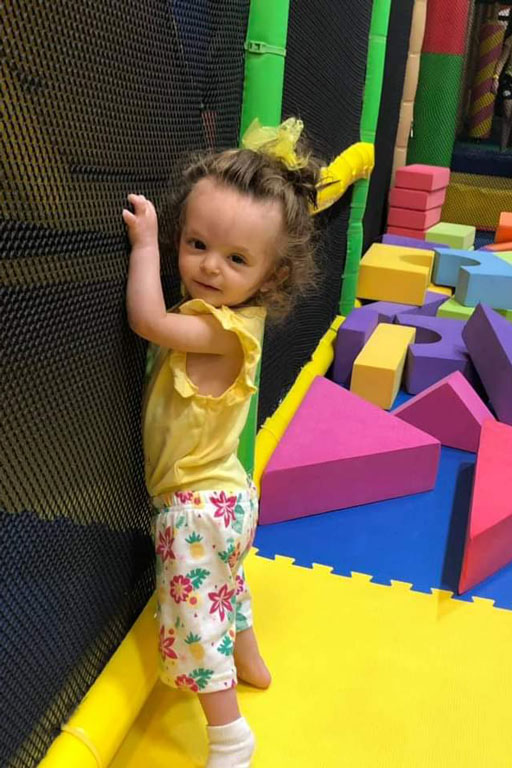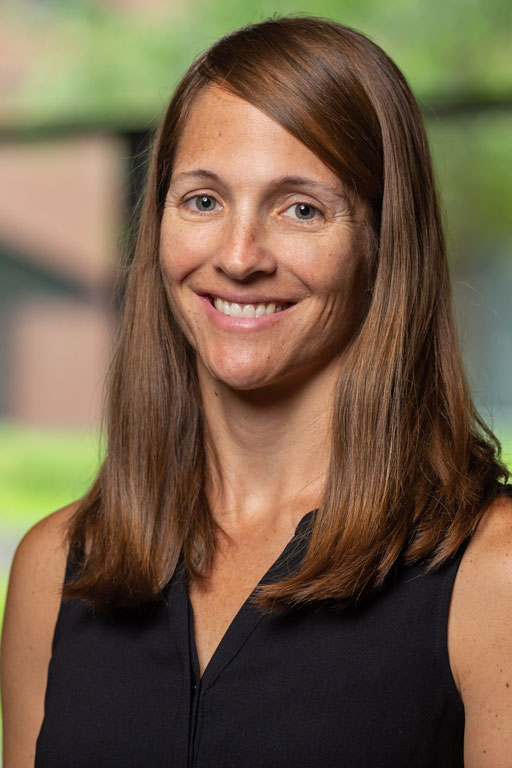More than two years after his death from osteosarcoma, an aggressive form of bone cancer, Tyler Trent’s legacy lives on in work being done by doctors and researchers at the IU School of Medicine with tumor tissue Trent donated.
In 2020, researchers at IU School of Medicine published findings announcing their discovery of a combination therapy that significantly slows tumor growth in models, which included a model established from one of Trent’s tumors. The research team found a genetic variation in the tumor and then determined that two known drugs used together blocked tumor growth substantially during a four-week treatment. The team published their research in the international oncology journal, Cancers, as the first published manuscript that included Trent’s tumor model.
Karen Pollok, associate professor of pediatrics at IU School of Medicine, and Jamie Renbarger, Caroline Symmes Professor of pediatric cancer research at IU School of Medicine, who led the research, say the study provides a path toward improving outcomes and finding cures for more children, adolescents, and young adults with osteosarcoma. The doctors also say they will be forever grateful to Tyler Trent for his dedication to cancer research advocacy.
Description of the video:
[Music playing]
Tyler Trent, a young man wearing glasses and using a crutch, walks onto screen. He hands a file to a nurse wearing blue scrubs.
Nurse speaks: Good afternoon, thank you, sir, how are you?
Tyler speaks in voiceover as nurse and he walk down hall: Everyone has a story, there just needs to be someone willing to listen to that story
[Childhood and family photos of Tyler Trent fade on and off screen]
I'm Tyler Trent, born and raised in Carmel Indiana. I’ve been a die-hard sports fan for pretty much my entire life, just finished out my freshman year at Purdue University.
[Kelly Trent, Tyler’s mother, appears on screen, seated and talking to camera.]
Kelly speaks: Tyler has always been relentless; he's relentless, he's efficient, he's a hard worker, he's smart, you don't tell him no.
[Music plays. The words “Tyler Trent has everything going for him, except a cure” appear in white letters against a black screen]
Tyler speaks, seated and speaking to the camera: I'm not going to sit here and say life isn't fair to me because I got osteosarcoma three times; I rather go out and do something about it.
[Music plays. The words “His first battle with osteosarcoma started at age 15. The cancer invaded his bones again two years later” appear in white letters against a black screen]
Tyler speaks: I had told them that, you know, that there wasn't any way that I was going to be kind of missing starting college
[Photo of Trent with bald head appears on screen]
Tyler speaks: In August, a week and six days before classes started at Purdue
[Photo of Trent, asleep in hospital bed and attached to monitors, appears on screen]
they removed my pelvis and my hip. February-ish, I started having some pain in my back
[Close up photo of Trent sleeping in hospital bed]
so they did a biopsy on it and found out that it was a third osteosarcoma tumor that was growing on my L3 on my spine.
[Black and white photo of Trent in hospital chair with family kneeling in front of him. Photo fades to video of nurse with scanner.]
Nurse speaks: Any questions before we get started? All right.
[Man wearing blue shirt with tie appears on screen. Words “Sandeep Batra, M.D., Pediatric Oncologist” appear to his left]
Batra speaks: With precision genomics we've been able to identify specific treatments which may actually work for him and keep him in a relative remission.
[Video fades to Tyler, seated and speaking to camera]
Tyler speaks: The scans today are essentially to figure out if that chemotherapy that we've been doing, if it's working.
[Video transitions to scanning room, with Tyler inside a scanner and his mother standing to the left.]
Tyler speaks in voiceover: I just trust in the Lord that whatever the results are
[Video of Tyler on gurney inside the scanner]
it’s what he's got planned for me and there’ll
[Video pans to show Tyler’s mother looking on with concern]
be good that comes out of it no matter what the outcome is.
[Video of young woman with long brown hair wearing glasses, seated and speaking to the camera. The words “Bailey Ransburg, 2017 Purdue University Dance Marathon President” appear on the screen to the left.]
Ransburg speaks: Last year I was the president of Purdue University Dance Marathon and we were very honored to have Tyler Trent as a community member on the Riley Relations Committee
[Video cuts to video of Tyler wearing red T shirt and shorts, sitting on stool speaking to audience]
to see him speak in that way to such a large crowd and mobilize all those people was really special
[Music plays. The words “Tyler also donated his tumor to the Riley Precision Genomics team to help them search for cures” appear in white letters against black screen].
[Video of Tyler seated and speaking to camera]
Tyler speaks: It's hard for me to see anyone else have to go through it. I would I would never want to put that on someone else. So that's why research is important, because without research you're never going to find a cure.
[Music plays. The words “Scans revealed Tyler’s tumor is still growing, and a new one has appeared” appear in white letters against black screen.]
[Video of Tyler seated and speaking to camera]
Tyler speaks: Maybe my drive revolves around the legacy that I leave and the fact that, you know the chances of me living to see cancer eradicated are pretty low but hopefully, you know, hundred years down the line, maybe my legacy could have an impact towards that.
[Video of Tyler’s mother seated and speaking to the camera]
Kelly speaks: You know he's a perfect example of somebody that we need. We need people to donate; we're depending on new things to keep him alive.
[Music plays. The words “As Tyler fights for his life, he has one request for all of us” appear in white letters against black screen]
[Video of Tyler seated and speaking to camera]
Tyler speaks: I mean, donate honestly. Money drives research.
[Video of Dr. Batra, seated and speaking to the camera]
Batra speaks: How can he not be inspiring to people? He is one of the most bravest inspiring people I know.
[Music plays. The words “Friends like Tyler can’t wait. Riley needs our help now to find cures” appear in white letters against black screen.
[Music plays. The words “#GiveHope at RileyKids.org” and the Riley Children’s Foundation logo appear on a white screen]
[Music fades out.]




